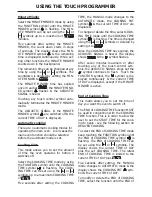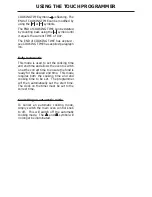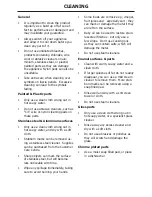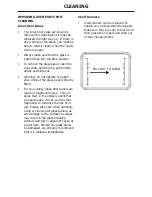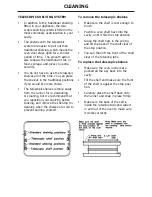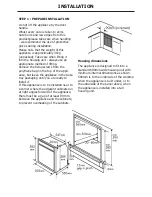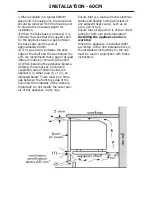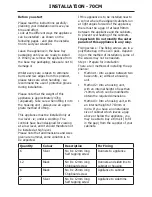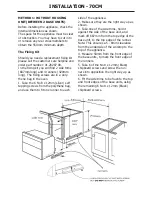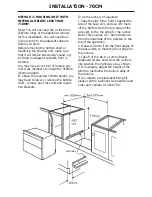
USING THE MAIN OVEN
which will require a different approach:
There are no zones of heat in a fan oven as
the convection fan at the back of the oven
ensures an even temperature throughout
the oven.
This makes it ideal for batch baking - e.g.
when planning a party as all the items will
be cooked within the same length of time.
Foods are cooked at a lower temperature
than a conventional oven, so conventional
recipe temperature may have to be
reduced. Please refer to the conversion
chart.
Preheating is generally not necessary as a
fan oven warms up quickly.
There is no flavour transference in a fan
oven, which means you can cook strong
smelling foods such as fish at the same
time as mild foods - e.g. milk puddings.
When batch baking foods that will rise
during cooking - e.g. bread - always
ensure that enough space has been left
between the shelves to allow for the rise.
Notes:
When 2 or more shelves are being used, it
may be necessary to increase the cooking
time slightly.
Because the 2 oven shelves are wider than
in many ovens, it is possible to cook 2
items per shelf - e.g. 2 victoria sandwiches
or 2 casseroles.
Although you need to keep in mind the
points ‘To help the air circulate freely’
with careful choice of dishes and tins, it
is possible to cook a complete meal, and
perhaps something else for the freezer, in
the oven at the same time.
When roasting meats, you will notice that
fat splashing is reduced, which is due in
part to the lower oven temperatures, and
will help keep cleaning of the oven to a
minimum.
Because a fan oven has an even
temperature throughout the oven, there is
no need to follow the shelf positions given
in the baking guide.
There is no need to interchange dishes
onto different shelves part way through
cooking, as with a conventional oven.
To help the air circulate freely
Position the shelves evenly within the oven
and maintain a clearance from the oven
roof and base.
If more than one cooking dish or baking
tray is to be used on a shelf, leave a gap
of at least 25mm between the items
themselves and the oven interior.
Defrosting and cooling in the
main oven
To defrost frozen foods, turn the main
oven control to the defrost position, place
the food in the centre of the oven and
close the door.
To cool foods after cooking prior to
refrigerating or freezing, turn the main
oven control to the defrost position and
open the door.
Defrosting times
Small or thin pieces of frozen fish or meat
- e.g. fish filets, prawns & mince will take
approximately 1 - 2 hours.
Placing the food in a single layer will
reduce the thawing time.
A medium sized casserole or stew will take
approximately 3 - 4 hours.
A 1½kg/3lb oven ready chicken will take
approximately 5 hours, remove the giblets
as soon as possible.
Be safe
Do not defrost stuffed poultry using this
method.
Summary of Contents for SEB900MFSe
Page 1: ...Stoves SEB900MFSe Part No 082755900 Date 21 07 2011 Users Guide Installation Handbook ...
Page 37: ...Please keep this handbook for future reference or for anyone else who may use the appliance ...
Page 38: ...Please keep this handbook for future reference or for anyone else who may use the appliance ...
Page 39: ...Please keep this handbook for future reference or for anyone else who may use the appliance ...

















